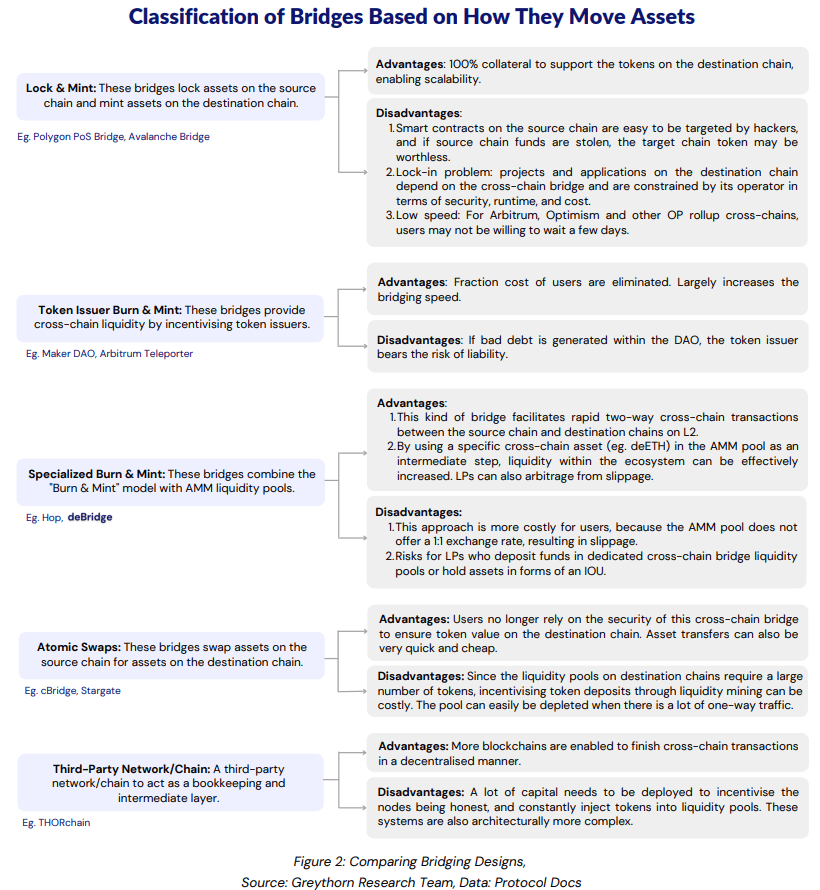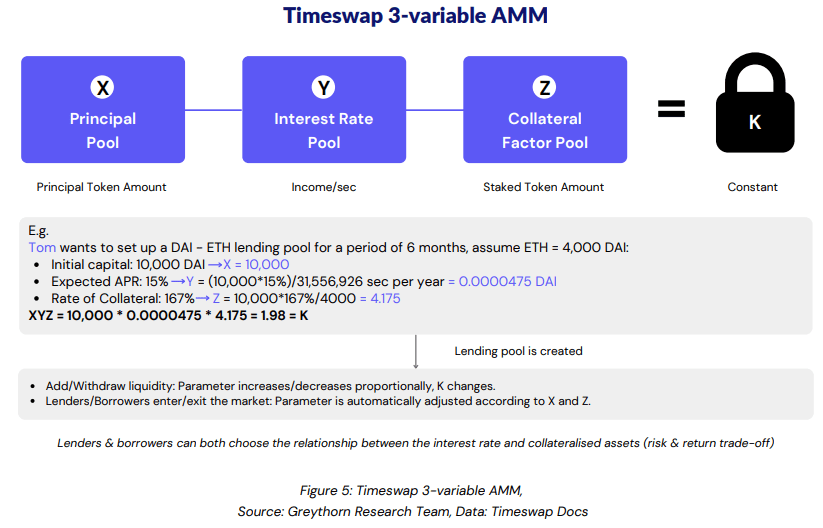
Exploring the innovative features being developed across bridging & lending markets.
- deBridge
deBridge is a cross-chain interoperability protocol that enables decentralised transfers of data and value (incl. NFTs using deNFT Bridge) between various blockchains through deSwap API. A network of independent validators are elected by and work for deBridge. The DAO runs nodes to sign transactions and maintain smart contracts. Delegated staking and slashing mechanics act as the backbone for protocol security and provide economic disincentives for validators to collude. Users can build custom bridges to send messages (deSDK) and interact with other blockchain ecosystems (deSwap widget).

Token: None

Comparables

Bullish Fundamentals:
- Security: Delegated staking and slashing mechanics ensure the cross-chain bridge operates within a specific service level agreement. If a validator acts dishonestly, the tokens it staked won’t be burned but distributed to delegators as compensation.
- Various use cases range from algorithmic stablecoins and synthetic assets (dePort) to gaming and socials.
- deSwap Liquidity Network (DLN) will be released soon, which is suited for bridge aggregators looking to offer limitless, zero-slippage cross-chain value transfers with no TVL required. It uses the “liquidity on demand” approach to solve the challenges of the classical “continuously locked liquidity” model. (Twitter & Medium updates posted on Oct.5, still in testing phase)
Bearish Fundamentals:
- The current slippage can be relatively high for large transfers of specific trading pairs.
2.Timeswap
Timeswap is a credit market that utilises the protocol’s supply & demand for pricing as opposed to oracles. The core mechanism lies within its 3-variable AMM that prevents users from being liquidated.
It provides flexibility to the end-user by allowing them to decide on their risk profile and accordingly set the interest rate & collateral for each lending or borrowing transaction. Loans with fixed maturities enable better cash flow planning for projects & organisations.

Token: None
Total Value Locked (TVL): None – Protocol is still on its alpha release.
Comparables
- No comparable protocols are in the current market. ThorFi on Terra was similar but never migrated away after the collapse.
Bullish Fundamentals:
- Increases capital efficiency and liquidity: Prevailing lending & borrowing protocols are facing the issue of over-collateralised and high liquidation risk. Although looping is a solution to enhance efficiency by leveraging, it sacrifices liquidity. However, Timeswap solves both of these.
- Attract long-tail assets with ample freedom: Timeswap allows anyone to borrow or lend any ERC20 token for a fixed period, using any other ERC20 token as collateral. The 3-variable AMM prevents the protocol from oracle manipulation risks, which means tokens without a mature market can freely be set up on Timeswap.
- High flexibility: Both borrowers and lenders can set their risk profile with flexible interest rates and collateral requirements.
- Timeswap enables projects to borrow against their native tokens. Compared to equity financing, it is very suitable for fair start and leveraged loan financing.
Bearish Fundamentals:
- Risk of loss: If the market displays significant volatility at maturity that the price of the collateralized asset is lower than the price of the lent asset, lenders will suffer a translation loss in terms of their functional currency, even though they have received the collateralised asset as compensation.
Closing Remarks
This piece emphasises the new & different finance-driven ideas being executed across DeFi, and that development can occur without needing a native token or public investment.
Both deBridge & Timeswap seek to offer something unique away from the traditional competitors in their space. Their growth in the long term ultimately rests on how resilient their product can remain in this bear market.




